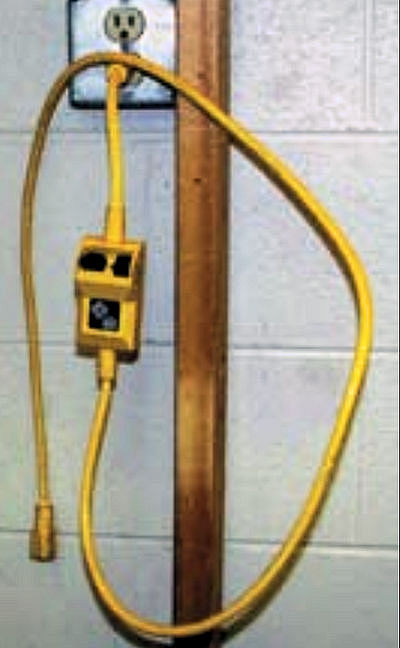Use Ground Fault Circuit Interrupters (GFCIs)
The use of GFCIs has lowered the number of electrocutions dramatically.
Portable Ground Fault Circuit Interrupter (GFCI)

A GFCI is a fast-acting switch that detects any difference in current between two circuit conductors. If either conductor comes in contact-either directly or through part of your body-with a ground (a situation known as a ground fault), the GFCI opens the circuit in a fraction of a second. If a current as small as 4 to 6 mA does not pass through both wires properly, but instead leaks to the ground, the GFCI is tripped. The current is shut off.
There is a more sensitive kind of GFCI called an isolation GFCI. If a circuit has an isolation GFCI, the ground fault current passes through an electronic sensing circuit in the GFCI. The electronic sensing circuit has enough resistance to limit current to as little as 2 mA, which is too low to cause a dangerous shock.
GFCIs are usually in the form of a duplex receptacle. They are also available in portable and plug-in designs and as circuit breakers that protect an entire branch circuit. GFCIs can operate on both two- and three-wire ground systems. For a GFCI to work properly, the neutral conductor (white wire) must (1) be continuous, (2) have low resistance, and (3) have sufficient current-carrying capacity.
GFCIs help protect you from electrical shock by continuously monitoring the circuit. However, a GFCI does not protect a person from line-to-line hazards such as touching two "hot" wires (240 volts) at the same time or touching a "hot" and neutral wire at the same time. Also be aware that instantaneous currents can be high when a GFCI is tripped. A shock may still be felt. Your reaction to the shock could cause injury, perhaps from falling.
Test GFCIs regularly by pressing the "test" button. If the circuit does not turn off, the GFCI is faulty and must be replaced.
The NEC requires that GFCIs be used in these high-risk situations:
- Electricity is used near water.
- The user of electrical equipment is grounded (by touching grounded material).
- Circuits are providing power to portable tools or outdoor receptacles.
- Temporary wiring or extension cords are used.
- Specifically, GFCIs must be installed in bathrooms, garages, out-door areas, crawl spaces, unfinished basements, kitchens, and near wet bars.
Knowledge Check Choose the best answer for the question.
7-9. For a GFCI to work properly, the neutral white wire must be continuous, have low resistance, and have _____.
You forgot to answer the question!
